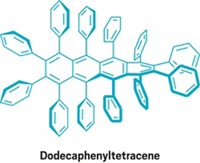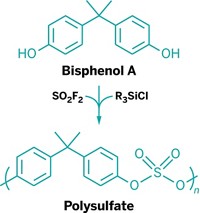Advertisement
Grab your lab coat. Let's get started
Welcome!
Welcome!
Create an account below to get 6 C&EN articles per month, receive newsletters and more - all free.
It seems this is your first time logging in online. Please enter the following information to continue.
As an ACS member you automatically get access to this site. All we need is few more details to create your reading experience.
Not you? Sign in with a different account.
Not you? Sign in with a different account.
ERROR 1
ERROR 1
ERROR 2
ERROR 2
ERROR 2
ERROR 2
ERROR 2
Password and Confirm password must match.
If you have an ACS member number, please enter it here so we can link this account to your membership. (optional)
ERROR 2
ACS values your privacy. By submitting your information, you are gaining access to C&EN and subscribing to our weekly newsletter. We use the information you provide to make your reading experience better, and we will never sell your data to third party members.
Synthesis
Tetraazidomethane: chemistry with a bang
December 18, 2006
| A version of this story appeared in
Volume 84, Issue 51
The chemistry of compounds containing multiple azide groups (N3) has entered a renaissance in recent years. Inorganic and organic versions of polyazides are of interest as high-energy-density materials (explosives, propellants, or fireworks) and have potential uses in the fabrication of electronic devices. Klaus Banert and his coworkers at Chemnitz University of Technology, in Germany, now report the latest addition to the polyazide family: tetraazidomethane (shown, top), a carbon atom with four azide groups attached (Angew. Chem. Int. Ed., DOI: 10.1002/anie.200603960). The team made C(N3)4 by reacting commercially available trichloroacetonitrile (Cl3CCN) with sodium azide (NaN3). The tetraazide is an isolable high-boiling-point liquid that is dangerous to handle, the researchers caution. They found that C(N3)4 hydrolyzes readily; that it can be trapped by the double bond of norbornene (product shown, bottom); and that it reacts with phosphines to form phosphazenes.





Join the conversation
Contact the reporter
Submit a Letter to the Editor for publication
Engage with us on Twitter